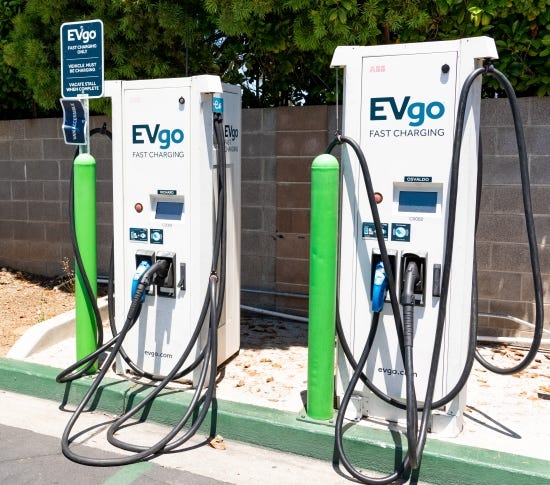Fresh Paths to Potential Ancillary Income for Self-Storage Operators
More than likely, you sell boxes and other moving supplies at your self-storage facility. You might even offer truck rentals or wine storage. While these profit centers are great revenue-generators and provide customer convenience, there are fresh new avenues to explore! Here are three to consider.

The self-storage industry has evolved rapidly in the past few years and so should operators’ product and service mix. Staple ancillaries like moving and packing supplies, vehicle storage, and even truck rentals are commonplace at most facilities these days. In fact, many customers expect them. To keep drawing new business and meet tenants’ needs, it’s time to explore fresh ideas for add-on profit. Following are three to consider.
Electric-Vehicle (EV) Charging Stations
Demand is rising for EV charging bays, which are popping up everywhere from shopping centers to business parks. Offering this service can boost foot traffic to your self-storage facility, provide convenience to customers and create a new money stream.
Lock+Store, which operates 13 self-storage facilities in Malaysia and Singapore, recently added two charging bays to its flagship property in the Chai Chee community of Bedok, Singapore. The service ties in with the company’s mission to offer sustainable services, plus adds value for its customers, says Leona Lo, head of marketing and customer experience. The property had adequate room for the bays, and they were added without a large investment to upgrade power capacity.

Lock+Store is finalizing the terms with its provider and looking at a profit-sharing model. While revenue from the charging stations isn’t expected to create a significant boost to begin with, the company is counting on the synergistic benefits of the service as well as an improved customer experience.
“In the long term, we hope to convert EV owners who are not storing with us into self-storage customers. In addition, it will improve the customer experience at our site, as our customers can charge their electric vehicles while accessing their storage units. We project that the adoption of EVs will only gain pace in Singapore,” Lo says.
To determine if EV charging stations might work for your self-storage business, Lo suggests conducting a land-use feasibility study. Also, contact municipal officials early in the planning stages to learn out about any regulations. “They should also be aware of the electricity capacity offered by existing power stations, which will limit the locations that they can offer the charging bays,” Lo adds.
Moving-Company Partnership
There’s clear synergy between the moving and self-storage industries, so why not capitalize on it? “No matter your market, if you have paying tenants, there’s a good chance they need movers,” says Zach Richards, founder and CEO of Caddy Moving, which partners with storage operators to create new revenue streams. “Similar to working with a truck-rental service, storage companies can give themselves a competitive advantage by offering movers at their business.”
This doesn’t mean simply having a stock of business cards on hand to distribute to inquiring customers. Rather, you should establish a partnership with a local moving company. Seek one that integrates with your online payment flow, Richards advises.
“There's a big drop off when customers have to purchase their storage and their movers in separate transactions,” he says. “When you can keep all the payments in one order, customers are more inclined to book right then and there. In addition, offering movers on your website modernizes your business and gets more revenue through the door faster. This works in every market, big or small!”

Moving companies that offer this kind of collaboration don’t typically charge fees to refer their business. “Look for moving companies that approach you with the offer to mutually refer customers to one another,” Richards recommends. “Set something up where you each have referral codes or web links. This incentivizes both parties to hold their weight.”
Many moving companies have yet to offer a revenue-share agreement, but there are some that are tech-forward that’ll seek partnerships with storage operators. “It's not rare for storage operators to see an additional $2,000 to $5,000 in revenue per month by offering this type of moving service,” Richards says.
Unit Shelving
An easy profit center that doesn’t require a huge investment or partnership initiation is shelving that can be placed inside your storage units. These can be purchased online or at a local retailer, assembled, and installed to vacant spaces. You can then charge more rent for these spots. Many renters will choose this option as it allows them to keep their belongings better organized and accessible.

Eagle Eye Secure Storage in Wasilla, Alaska, introduced this profit center about a year ago. The rate for units with shelving is $25 per month more. “Many customers have stated that it has saved them the time of going to Home Depot, buying and installing the shelves,” says property manager Arty Fonov. “It's not for everyone, but after one year of rental, these have paid themselves off and are making pure profit now!”
Fonov suggests grouping units with shelving in the same area of your facility. “If you've just opened a new building, consider making nearby units unrentable in case you want to throw shelving in them as you fill up.”
About the Author(s)
You May Also Like





